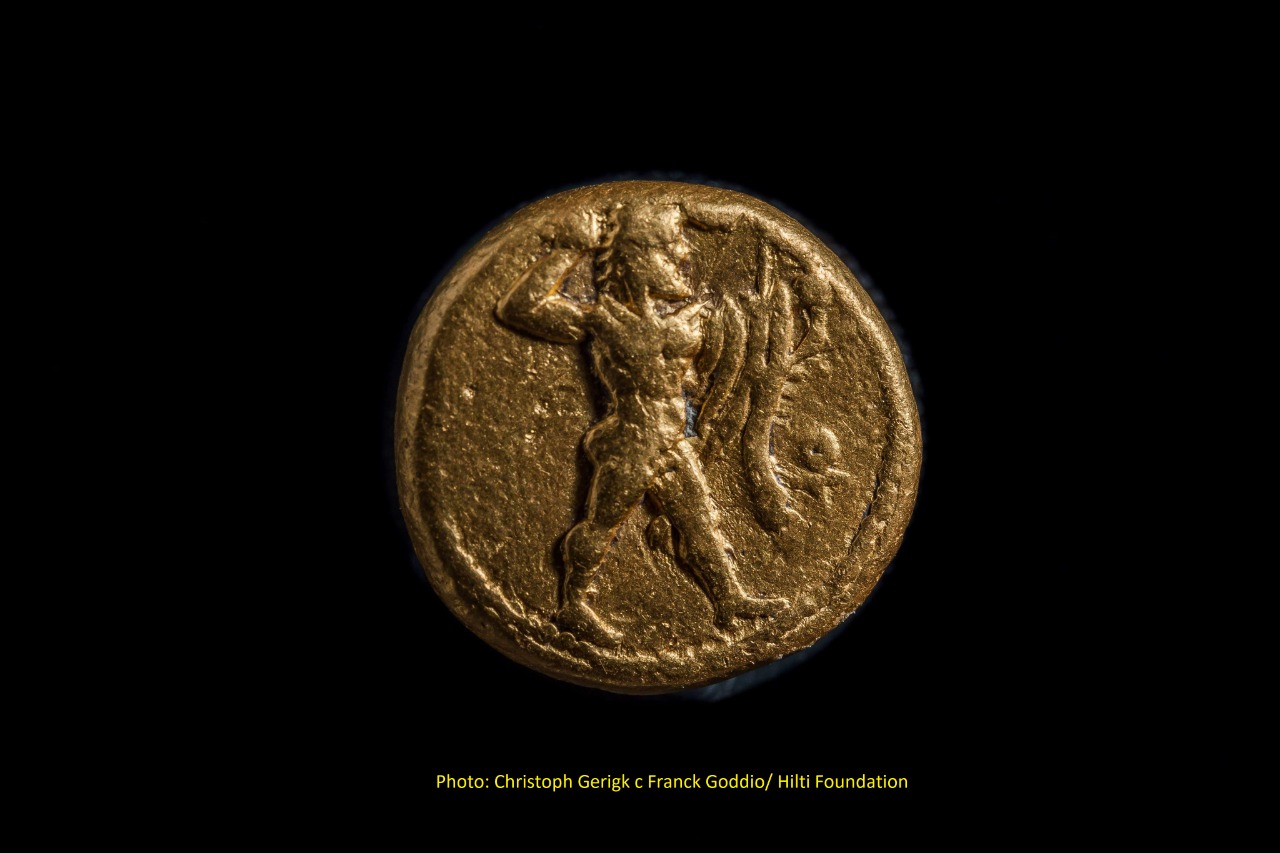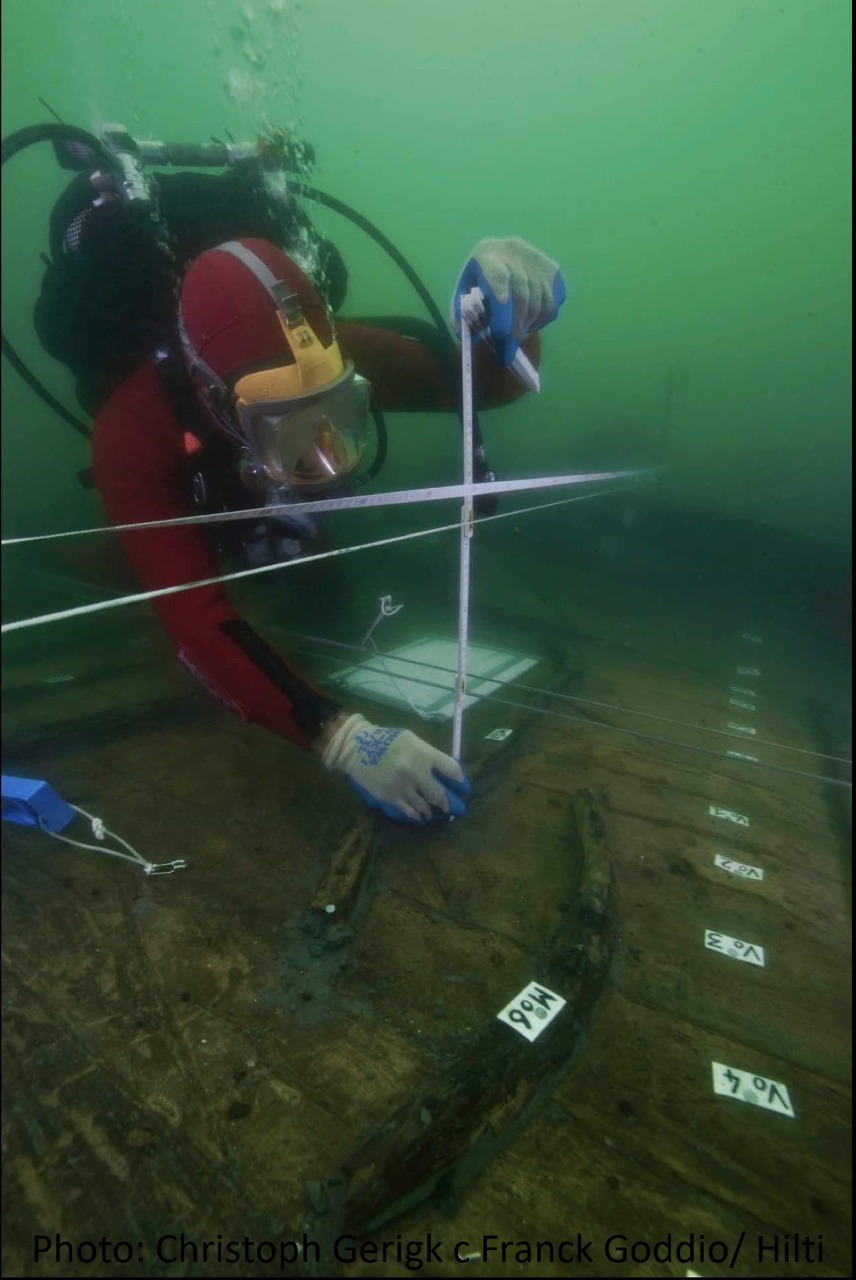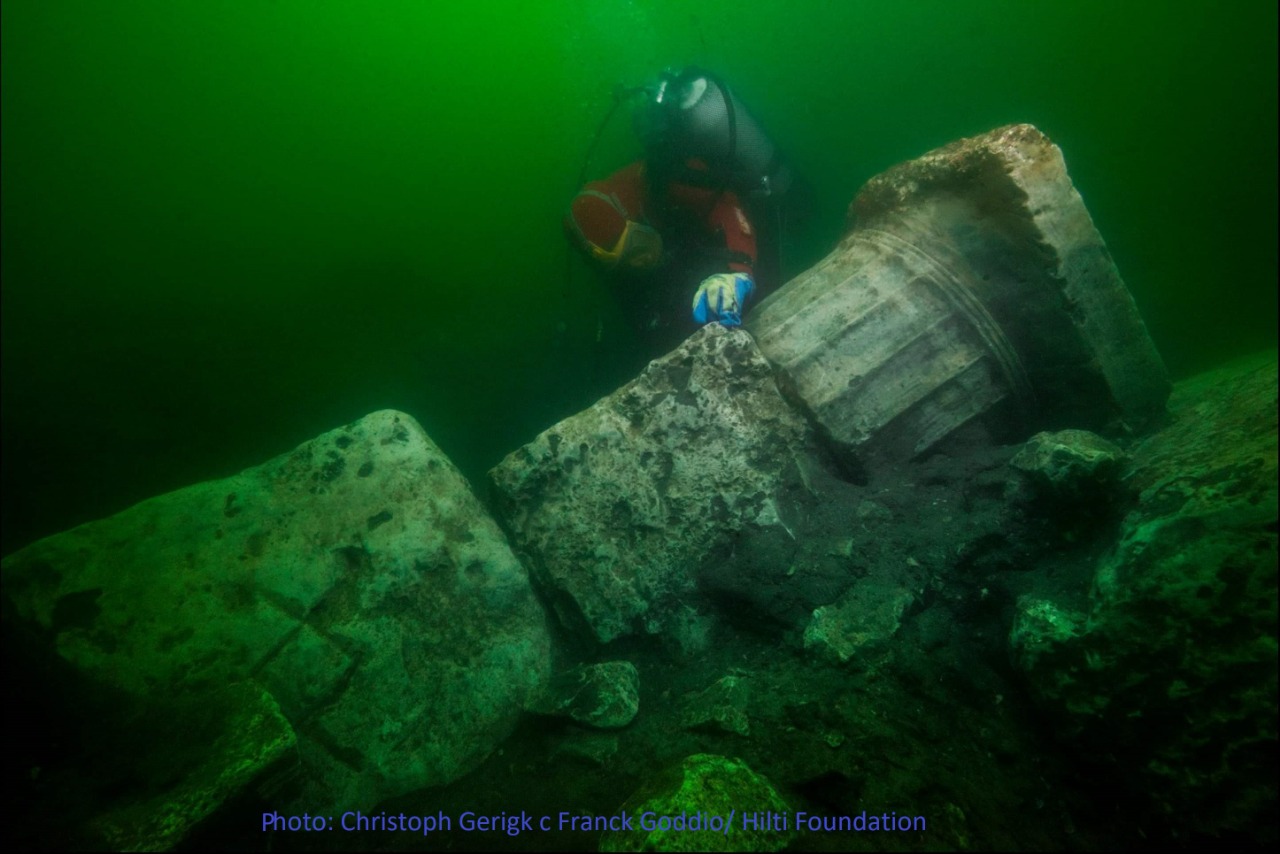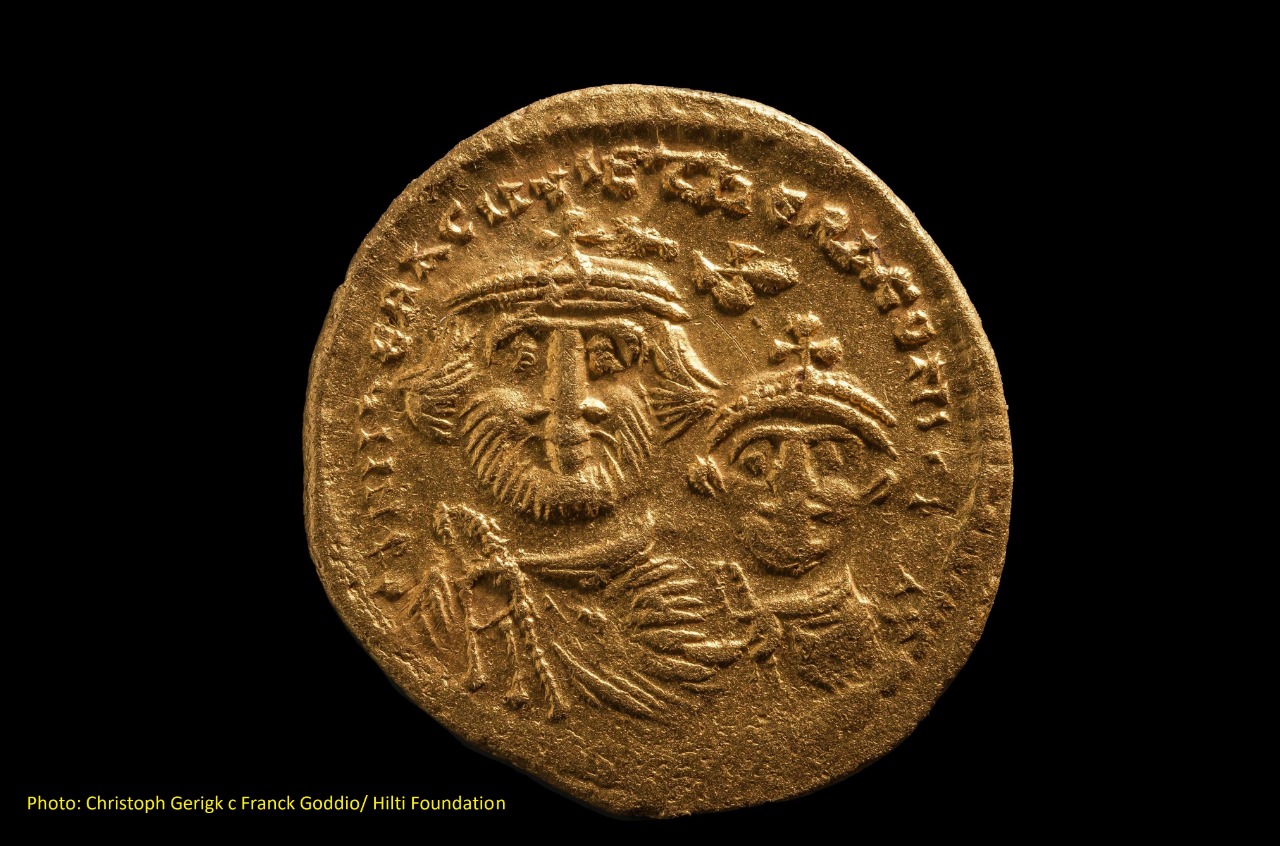CAIRO – 22 July 2019: The Egyptian-European Archaeological Mission of the European Institute of Marine Archeology concluded the archaeological season with the ruins of Canopus and Heraklun in the Gulf of Abi Qir, Alexandria, which lasted nearly two months.
Ehab Fahmy, head of the Central Department of Submerged Antiquities, explained that all maritime research work for this season was carried out using the SSPI, the latest surveying device, which conveys photographs of the archaeological evidence on the seabed or buried below it. Archaeological survey at the site of the ruins of the city of Canopus resulted in the discovery of the remains of a group of buildings gives the city of Canopus, another extension to the south for a distance of 1 km, found the remains of a port and a collection of pottery vessels from the era of Sawi and gold coins and metal, and gold jewelry of rings and earrings in addition to bronze coins from the Ptolemaic era, Gold coins from the Byzantine era, which is likely that the city was inhabited in the period between the fourth century BC and the Islamic era.
In the ruins of the sunken city of Heraklion, Franck Goddio, the head of the mission, explained that the expedition uncovered part of a completely destroyed temple inside the southern canal; it is the main temple of the city (Amun Garp), as well as many storage and tableware from the 3rd and 2nd centuries BC, bronze coins from the reign of King Ptolemy II, and parts of period columns, which were preserved three meters deep from the silt inside the seabed as well as the remains of a smaller Greek temple inside the channel silt.
Jodio pointed out that the survey of the site using SSPI resulted in another extension of Heraklion port, which consists of a group of ports that were previously unknown.
Fahmi added that some of the 75 vessels that had been discovered, including the ancient Egyptian vessel from the end of the fifth century BC, were also studied. Herodotus described it as a Baris type, such as the wreckage of ship No. 6 and the wreckage of the vessel No. 17 , In addition to the ritual processions such as the wreckage of the vessel No. 11.
In the same context, Fahmi explained that the wreckage of the vessel No. 61, which was operated by a specialized Egyptian team over the past four seasons, was fully discovered. The vessel was 13 meters long and 5 meters wide and was buried in mud at a depth of 1-3 meters It was found on several pottery, metal, coins and ornaments, dating to the ruins in the fourth century BC. And is currently being studied in preparation for the preparation of scientific publication in conjunction with the mission.



.jpg)

 Mon, Jul. 22, 2019
Mon, Jul. 22, 2019



.jpg)
